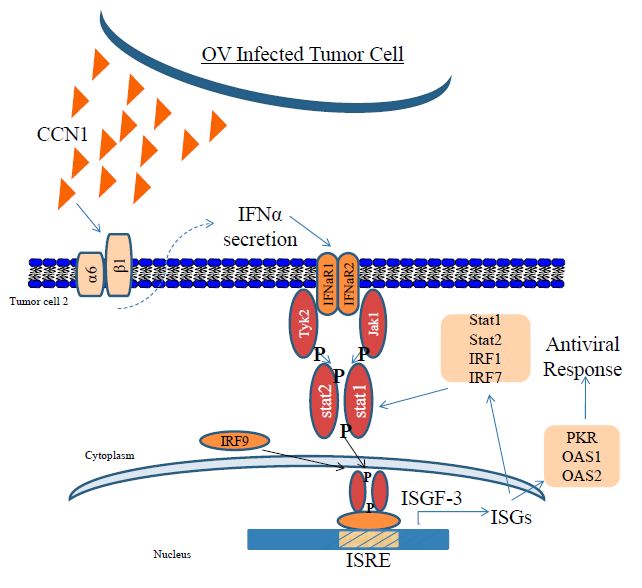Cancer cells send out the alarm on tumor-killing virus
March 21, 2012
Brain-tumor cells that are infected with a cancer-killing virus release a protein “alarm bell” that warns other tumor cells of the impending infection and enables them to mount a defense against the virus, according to a study led by researchers at The Ohio State University Comprehensive Cancer Center — Arthur G. James Cancer Hospital and Richard J. Solove Research Institute (OSUCCC — James).
The infected tumor cells release a protein called CCN1 into the narrow space between cells, where it initiates an antiviral response. The response limits the spread of the oncolytic virus through the tumor, reducing its ability to kill cancer cells and limiting the efficacy of the therapy.
The study suggests that cells in general might use this mechanism to help control viral infections, and that blocking the response might improve oncolytic viral therapy for glioblastoma and perhaps future gene therapy treatments.
Improving future viral gene therapy
Oncolytic viruses replicate in tumor cells and kill them. They have shown promise for the treatment of glioblastoma, the most common and deadly form of brain cancer. Patients with glioblastoma survive about 15 months after diagnosis on average, so there is great need for new treatments.
“We found that, in the extracellular matrix, this protein orchestrates a striking cellular antiviral response that reduces viral replication and limits its cytolytic efficacy,” says researcher and principal investigator Balveen Kaur, associate professor of Neurological Surgery at the OSUCCC – James.
“These findings are significant because they reveal a novel mechanism used by infected cells to fight viral infections and alert adjacent uninfected cells to prepare their defenses to fight off forthcoming viral attacks,” Kaur says.
Kaur notes that CCN1 helps regulate cellular functions that include adhesion, migration, and proliferation, and that it is overexpressed in 68 percent of glioblastoma specimens.
“Overall, this finding reveals how extracellular signaling can contribute to viral clearance,” Kaur says. “We can now utilize this knowledge to improve future viral gene therapy.”
Ref.: Amy Haseley, et al., Extracellular Matrix Protein CCN1 Limits Oncolytic Efficacy in Glioma, Cancer Research, 2012; [DOI:10.1158/0008-5472.CAN-11-2526]
